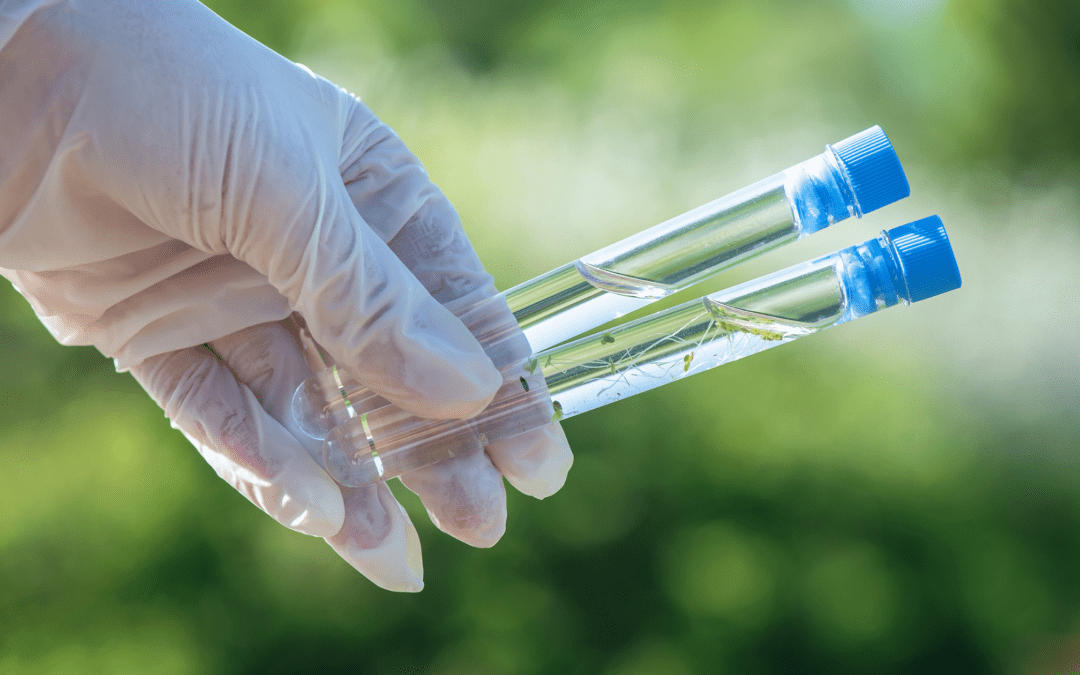Water is essential for life. We use it every day for drinking, cooking, bathing and more. But did you know that water quality can have major impacts on your health? Having clean, contaminant-free water is crucial. That’s why regular water quality testing is so important.
The Importance of Clean Water
Clean water is a basic human right. Yet many people, even in developed countries, do not have access to safe drinking water. Contaminants from natural sources or human activities can pollute water supplies. Examples of contaminants include:
- Bacteria and viruses from sewage leaks or animal waste
- Heavy metals like lead and mercury from industrial discharges
- Pesticides and fertilizers from agricultural runoff
- Petroleum products and chemicals from spills or leaks
- Naturally occurring arsenic, radon or uranium
These contaminants can cause immediate sickness such as diarrhea or long-term health effects including neurological damage, cancer and more. Access to clean, contaminant-free water is essential for good health.
How Does Water Get Contaminated?
Water naturally travels through the environment in what is known as the water cycle. As it moves through soil, air and living things, it can pick up natural and human-caused contaminants. Here are some common ways water gets contaminated:
Surface Water Contamination
Lakes, rivers, streams and reservoirs that are exposed to the environment and wildlife are susceptible to many contaminants:
- Runoff from roads, fields or industrial areas can contain heavy metals, chemicals, fuel or debris
- Sewage discharges or leaks introduce bacteria, viruses and nutrients that allow algal blooms
- Animal or human waste adds microbes and excess nutrients like nitrogen
- Mining operations release heavy metals like arsenic, lead and mercury into waterways
Groundwater Contamination
Water that soaks into soil and porous underground rock may seem protected, but groundwater can still become polluted:
- Seepage from landfills or hazardous waste sites
- Chemical spills, pipeline leaks or industrial discharges
- Septic systems, underground storage tanks or sewer lines can leach chemicals and microbes into groundwater
- Overuse of fertilizers or pesticides that get into the water table
- Natural contamination from rocks and sediments
Drinking Water Contamination
Tap water from public systems is treated to remove contaminants, but problems still occur:
- Aging pipes and infrastructure may leach lead or other metals into water
- Improper treatment or equipment failures can allow some contaminants through
- Pollution entering source water overwhelms the treatment process
- Contamination during distribution through pipes and storage tanks
Regular water quality testing is the only way to ensure your tap water is safe.
Health Risks from Contaminated Water
Consuming or exposure to contaminated water poses significant health risks. The type and severity of illness depends on the specific contaminant. Here are some potential health effects:
Microbes – Bacteria, viruses, parasites and other microorganisms are the most common water contaminants globally. They can cause gastrointestinal illnesses like diarrhea, vomiting, cramps and nausea. At risk groups including children, elderly and those with weak immune systems may develop serious infections and complications.
Heavy Metals – Lead, mercury, arsenic and other metals have toxic effects throughout the body. Exposure has been linked to damage to the brain, kidneys, lungs and other organs. Children are especially vulnerable to the neurological effects of lead and mercury.
Pesticides/Chemicals – Agricultural runoff and industrial discharges can contain many synthetic chemicals. These can disrupt hormones, reproduction and development. Some are carcinogenic. PFAS (per- and polyfluoroalkyl substances) are widely used chemicals that persist in the environment and body and are linked to cancer, liver damage, thyroid disease and other effects.
Radionuclides – Radioactive substances like uranium, radium and radon may be present in groundwater naturally or from mining/industry. They elevate cancer risk, particularly of the stomach, liver and bladder. Radon gas is the second leading cause of lung cancer.
Nitrates/Nitrites – Nitrogen compounds from fertilizers and sewage can reduce oxygen supply in the blood. Infants are especially vulnerable, with “blue baby syndrome” as one harmful effect. Adults may experience thyroid and reproductive problems.
Contaminated water deserves caution. Testing water regularly for harmful microbes, chemicals and other contaminants is key to avoiding these risks and safeguarding health.
When Should You Test Your Water?
Homes on public water systems still need testing. Although utilities and municipalities work to provide safe, clean tap water, problems can occur. Testing ensures your drinking water specifically is contaminant-free. Testing is recommended:
- Annually – Test for a standard panel of contaminants
- When moving into a new home – Establish a baseline water quality
- After repairs or maintenance to plumbing
- If noticing bad tastes, odors, colors or sediment
- After nearby construction or chemical spills
- When using a private well or other non-public water source
Water quality testing kits are widely available for home use. Or you can hire a water testing company to collect and analyze a sample. This is the only way to know your water’s quality. Don’t simply assume it’s safe.
What Should Be Tested in Water?
There are many possible water contaminants, but some standard tests cover the major risks. Here are key elements to test for:
Microbes – Test for total coliform bacteria and E. coli to check for potential sewage contamination. Other pathogens may also be included. These pose an immediate illness risk if present.
Metals – Test for lead, copper, arsenic, mercury and other heavy metals that may leach from plumbing or come from industrial sources. These have toxic health effects.
Nitrates – Runoff from fertilizers is the main source of elevated nitrate in drinking water, which can be very harmful to infants and pregnant women.
Chemicals – Scan for solvents, cleaners, pesticides, and industrial chemicals like PFOA from nearby contaminated sites or spills. These can be toxic.
Radionuclides – Radioactive elements like uranium and radon may be present in groundwater naturally or from mining or other exposure. Test if this could be a local concern.
A full panel covers all the major bases to confirm your water supply is free of dangerous contaminants. Additional specialty tests for fluoride, sodium or hardness may be desired for specific health factors like teeth or heart health.
Interpreting Your Water Test Report
Once a water sample is tested, you will receive a report detailing what was found. The results will usually be shown in units of parts per million (ppm) or parts per billion (ppb). Even tiny concentrations can be harmful.
Here are key things to look for in your results:
- Zero – None detected is ideal for any possibly harmful contaminant
- Below the limit – Maximum allowable limits are set for various contaminants based on health risk. Below the “MCL” is good.
- Meets standards – There are guidelines for safe recommended levels of beneficial minerals like calcium and magnesium. “Acceptable” means these are at normal desired concentrations.
- Violation – Exceeding a maximum contaminant level for any test indicates a problem needing action. Retest and address this.
Understanding your water quality report empowers you to make informed decisions about using water filters, taking remedial actions if needed, or deciding if the water is safe for drinking and cooking. Contact a water expert to explore next steps when problems are found.
How to Improve Water Quality at Home
If testing reveals contaminants are present above safe levels in your home’s water, take action to improve quality:
- Install filters – Point-of-use filters for water taps, showerheads and whole house systems remove many contaminants and improve taste, odor and appearance. Match the filter to the specific pollutant. Replace filters regularly.
- Treat the well – Shock chlorination, sediment removal and other well treatments can resolve bacterial issues. Treatment systems also remove problem contaminants.
- Flush pipes – Letting taps run until cold, especially first thing in the morning or after long absences, brings in fresh water. This minimizes metals from plumbing.
- Avoid contaminated taps – Don’t use taps where tests show high levels of lead, copper or other contaminants. Use only taps proving safe.
- Improve plumbing – Replace old pipes, soldiers, fittings and fixtures containing lead. Use only lead-free plumbing.
Addressing water quality problems at the source is key. But point-of-use solutions let you take control at home immediately to protect your family. Using water quality testing to audit all taps, monitoring trends and confirming remedial actions are working ensures you provide the cleanest, healthiest water possible to your household.
Why Everyone Should Test Their Water
Safe water is vital for health, and testing is the only way to ensure the water you cook, drink and bathe in is truly clean. Here are key reasons why all homes should routinely test their water quality:
- Tap water safety – Do not assume tap water is pure. Test to confirm your municipality or well system is delivering clean water to your house.
- Identify risks – Testing can detect harmful contaminants you cannot see, smell or taste so you can take prompt action to protect your household.
- Establish a baseline – Understand your water’s natural composition and mineral content with initial testing. Track any changes over time.
- Verify filters – Confirm treatment systems and filters are working properly to remove contaminants of concern in your water.
- Manage special risks – Test more frequently if household members are pregnant, nursing infants or have weakened immune systems. Target specific risks.
- Maintain plumbing – Testing can identify lead, copper and pathogens from corroded pipes and lead to replacement of unsafe plumbing.
- Peace of mind – Enjoy drinking, cooking and bathing without worrying if water is totally safe for your whole family with periodic testing.
Water quality testing is quick, easy and affordable. The small investment protects your family and home against the very real health risks from contaminated water. Make water testing part of your regular household maintenance routine.
Finding A Reputable Water Testing Lab
Look for an accredited water testing lab when you send out a sample. This ensures rigor, accuracy and standardized procedures. Here are some tips on finding a reliable lab:
- State certification – Many state health or environmental departments accredited testing labs meeting quality standards. Prefer an accredited lab.
- Experience – Look for an established company with years or decades of experience analyzing water samples for homes and businesses. Check their track record.
- Proper methods – The lab should follow EPA-approved methods and use sophisticated equipment like mass spectrometers for precise results.
- Accreditations – Certifications from organizations like the NELAC Institute demonstrate commitment to quality control.
- Team credentials – Look for degreed chemists and technicians with training in water quality analysis. This expertise matters.
- Full testing lineup – Seek a lab that can test for all major water contaminants. Avoid companies with limitations.
- Clear reporting – Ask for sample reports to be sure you understand how results will be communicated clearly. Look for explanations.
Shop around to compare pricing, reputation and capabilities when selecting a water quality testing lab. Investing in the right lab helps ensure useful, meaningful test results.
How Often Should Water Be Tested?
Most contaminants can fluctuate over time, so a single test is not enough. Here are recommendations on testing frequency:
- Annually – Test all water sources in the home once a year for a standard panel of contaminants. This basic maintenance monitors for issues.
- Quarterly – Test more often, every 3 months, if initial results found contaminants nearing maximum allowed levels. Frequent monitoring ensures they remain below thresholds.
- After repairs – Test immediately if plumbing repairs or replacements are made, especially to service lines, due to risks of lead and other metals entering the water.
- With treatment changes – Anytime type of filtration is changed or maintenance is done to treatment systems, test to confirm they are working as expected.
- With health concerns – Test more frequently if family members are pregnant, nursing, or have health conditions putting them at higher risk if any contaminants were present.
- After nearby contamination – Test immediately if chemical spills, floods, fires or other incidents could potentially affect your water source.
Water quality testing protects health, so make it a routine practice in your home maintenance schedule. Adapt the frequency based on results, risk factors and events that could change water quality. Test annually at minimum, and whenever concerned.
Top Tips for Collecting a Water Sample
Proper collection methods are vital for getting accurate water quality testing results you can rely on. Follow these best practices when gathering a sample:
- Use sterile collection bottles provided by the testing lab with preservative added already. Never reuse bottles.
- Select a frequently used faucet and detach any screens, aerators or filters. Avoid leaky, dirty or seldom used taps.
- Sanitize by flaming the end of the tap with a propane torch or lighter to kill any bacteria present.
- Run the water approximately 5 minutes before collecting the sample to flush the pipes and bring in fresh water.
- Fill the sample bottle as instructed. Do not rinse out preservatives – this ensures an accurate microbe test. Leave headspace as directed.
- Label bottle clearly with sample site, date and time. Complete any paperwork. Note any apparent water quality.
- Refrigerate sample and deliver or ship to the lab right away following their guidelines. Samples must arrive cold.
Proper technique in collecting the water sample helps guarantee useful results from lab analysis. Follow instructions precisely. Seek guidance from the testing lab as needed to get it right. Proper testing starts with the sample.
Partnering With a Water Treatment Company
For the most thorough approach to your home’s water safety, partner with a water treatment company offering a full-service program including:
- Initial and ongoing water quality testing – They can handle collecting samples, submitting to certified labs, interpreting results and explaining the meaning to homeowners. Rely on their expertise.
- System selection and installation – With testing results in hand indicating which contaminants are present, they prescribe the ideal filtration or other treatment solutions for your scenario.
- Equipment maintenance – Water treatment systems require upkeep like changing filters to remain effective. They take care of this for you.
- Alerts for needed testing – Companies will notify you when it’s time for routine follow-up testing to keep an eye on your home’s water quality.
- Customer support – Have peace of mind knowing a team of water quality specialists is on call to address any issues or questions about your home’s water.
Partnering with a single company for ongoing monitoring, treatment and maintenance makes safeguarding your water simple and convenient while giving you confidence it’s being handled correctly. Consider enlisting professional support.
Clean water is invaluable. Without quality testing and effective filtration as needed, contaminants that are invisible but harmful may be lurking in your water undetected. Make water quality testing an ongoing priority – it is one of the most important things you can do to safeguard your household’s health.







